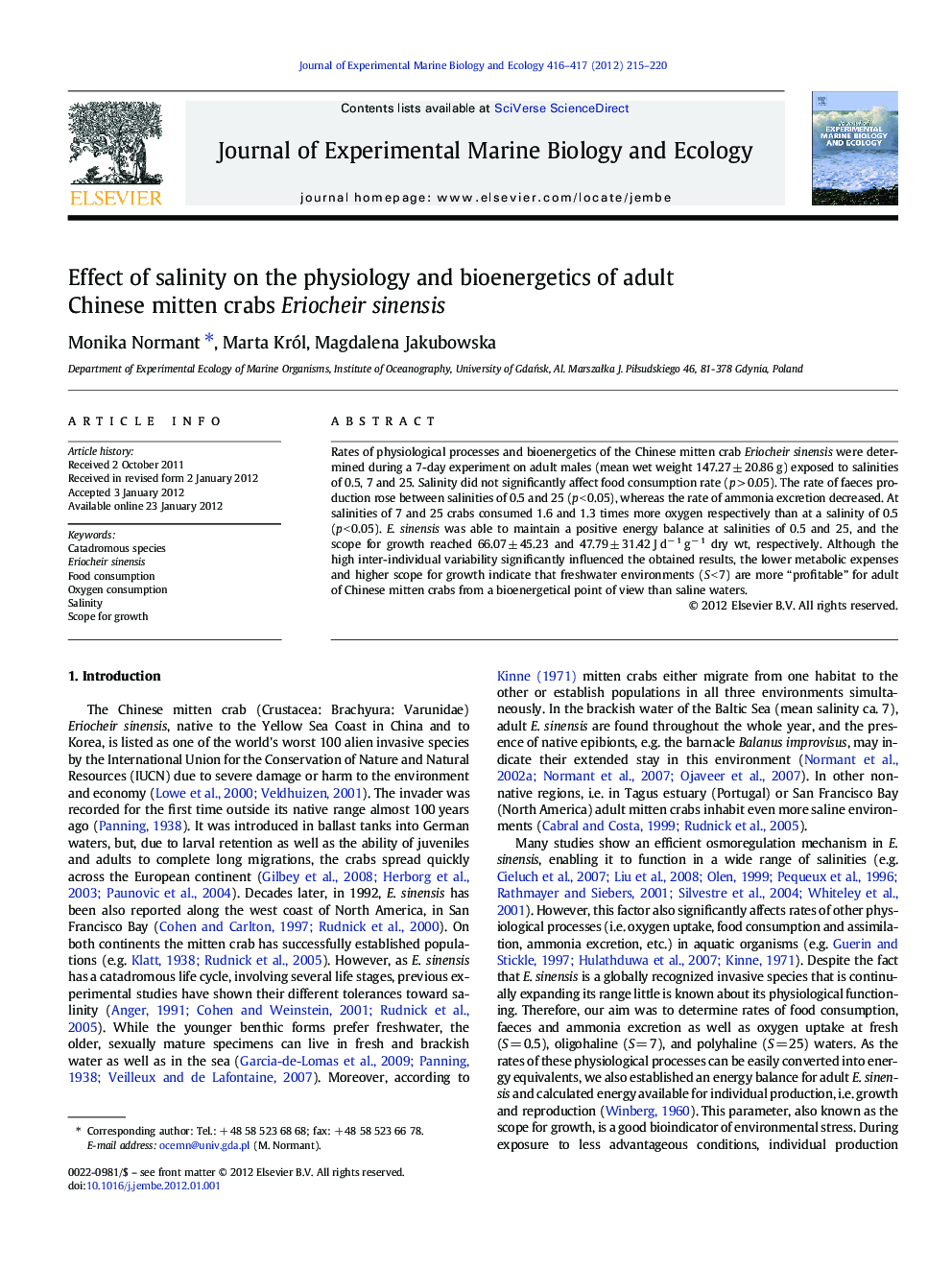| Article ID | Journal | Published Year | Pages | File Type |
|---|---|---|---|---|
| 4396112 | Journal of Experimental Marine Biology and Ecology | 2012 | 6 Pages |
Rates of physiological processes and bioenergetics of the Chinese mitten crab Eriocheir sinensis were determined during a 7-day experiment on adult males (mean wet weight 147.27 ± 20.86 g) exposed to salinities of 0.5, 7 and 25. Salinity did not significantly affect food consumption rate (p > 0.05). The rate of faeces production rose between salinities of 0.5 and 25 (p < 0.05), whereas the rate of ammonia excretion decreased. At salinities of 7 and 25 crabs consumed 1.6 and 1.3 times more oxygen respectively than at a salinity of 0.5 (p < 0.05). E. sinensis was able to maintain a positive energy balance at salinities of 0.5 and 25, and the scope for growth reached 66.07 ± 45.23 and 47.79 ± 31.42 J d− 1 g− 1 dry wt, respectively. Although the high inter-individual variability significantly influenced the obtained results, the lower metabolic expenses and higher scope for growth indicate that freshwater environments (S < 7) are more “profitable” for adult of Chinese mitten crabs from a bioenergetical point of view than saline waters.
► Rates of physiological processes of E. sinensis were determined in three salinities. ► Salinity did not significantly affect food consumption rate. ► Salinity affected rates of faeces production, ammonia excretion, oxygen consumption. ► E. sinensis maintained a positive energy balance at 0.5 and 25 psu. ► Lower metabolic expenses and higher scope for growth were obtained in freshwater.
